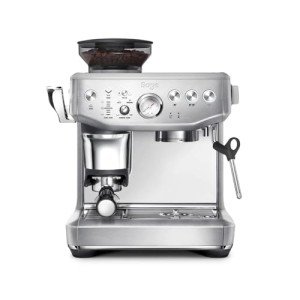The No. 1 Question Everyone Working In Dual Boiler Espresso Machines Must Know How To Answer
Understanding Dual Boiler Espresso Machines: A Comprehensive Guide
Espresso is an art as much as it is a science. For coffee enthusiasts and baristas alike, accomplishing the perfect shot of espresso requires accuracy and control over brewing variables. Among the most reliable methods to attain this precision is through the use of dual boiler espresso machines. This article delves into the functionality, benefits, and factors to consider of dual boiler espresso machines for both novices and skilled coffee aficionados.
What is a Dual Boiler Espresso Machine?
A dual boiler espresso machine features 2 different boilers: one for developing espresso and the other for steaming milk. This design allows the user to brew coffee and steam milk all at once, achieving optimum temperature control for both procedures. knowing it is crucial for developing lattes, cappuccinos, and macchiatos, where both components are essential.
Table 1: Key Components of Dual Boiler Espresso Machines
Part
Function
Espresso Boiler
Heats water to the ideal brewing temperature level (around 190 ° F)
. Steam Boiler
Warms water to a higher temperature level (around 250 ° F) for steaming milk.
PID Controller
Regulates the temperature of the boilers for accuracy brewing.
Group Head
Where the coffee premises sit and warm water passes through.
Steam Wand
Delivers steam to froth milk.
Benefits of Dual Boiler Espresso Machines
1. Simultaneous Brewing and Steaming
The most substantial benefit of dual boiler espresso machines is the ability to brew espresso and steam milk at the very same time. This effectiveness is particularly helpful in hectic environments, such as coffee shops, where speed and quality are paramount.
2. Consistent Temperature Control
Dual boiler machines frequently include sophisticated PID (Proportional Integral Derivative) controllers that preserve a consistent temperature level throughout the brewing process. Consistency is vital in espresso making to ensure the very best extraction, therefore enhancing taste and fragrance.
3. Personalization and Versatility
With 2 different boilers, users can tailor the temperature settings for both espresso brewing and milk steaming. This suggests various kinds of coffee, such as lighter or darker roasts, can be prepared perfectly to suit individual taste profiles.
4. Suitable for Advanced Techniques
For those interested in latte art or other advanced techniques, a dual boiler espresso machine provides the versatility to deal with numerous milk textures while also drawing out espresso. This versatility makes it an attractive option for baristas who want to refine their skills.
5. Longevity and Durability
Lots of dual boiler machines are constructed with high-quality materials designed for durability. They are frequently made from stainless steel and feature long lasting elements, making them a worthwhile financial investment for anybody serious about coffee.
Disadvantages of Dual Boiler Espresso Machines
In spite of their various advantages, dual boiler machines can have some drawbacks:
- Higher Cost: Dual boiler machines tend to be costlier than their single-boiler equivalents, which may not be ideal for casual coffee drinkers.
- Size and Space: These machines may inhabit more countertop space than others, making them less ideal for small kitchens.
Table 2: Key Considerations When Choosing a Dual Boiler Espresso Machine
Factor to consider
Explanation
Budget
Dual boiler machines can range from ₤ 1,000 to over ₤ 4,000.
Size
Examine your kitchen area before acquiring.
Brand Reputation
Search for well-reviewed brands with good customer assistance.
Features
Consider what functions are essential (e.g., PID controller, volumetric alternatives).
Upkeep
Some machines may need more routine maintenance than others.
FAQs
1. Are dual boiler espresso machines worth the financial investment?
Yes, they deserve the investment for major coffee lovers or professional baristas who value precision in espresso extraction and milk steaming.
2. How do I maintain a dual boiler espresso machine?
Routine upkeep includes descaling the machine, cleaning up the group head, and guaranteeing that the steam wand is without milk residue. Speak with the manufacturer's manual for particular standards.
3. Can I use a dual boiler espresso machine for other brewing approaches?
Normally, dual boiler machines are designed mainly for espresso. However, they can generally brew quality drip coffee and other designs with the ideal settings and modifications.
4. What brand names are understood for their dual boiler machines?
Some reputable brands include La Spaziale, Breville, and ECM. Each brand name has its own unique functions and pricing.
5. What is the typical lifespan of a dual boiler espresso machine?
With appropriate care and upkeep, a dual boiler machine can last over a decade, making it a long-lasting investment for coffee lovers.
Dual boiler espresso machines represent the apex of espresso-making innovation, merging art and science into one compact gadget. While they require a higher preliminary financial investment and more countertop space, the benefits they use— such as synchronised developing and steaming, accurate temperature level control, and sturdiness— make them ideal for major coffee enthusiasts. Comprehending the operations, advantages, and factors to consider for these machines will allow customers to make educated choices and elevate their coffee developing experience. Whether at home or in a hectic coffee shop, a dual boiler machine can really improve the art of espresso.
